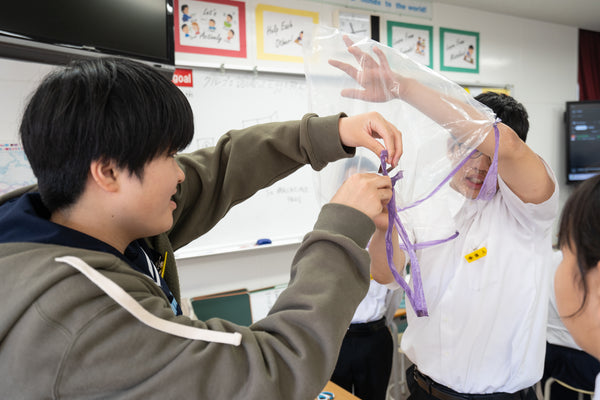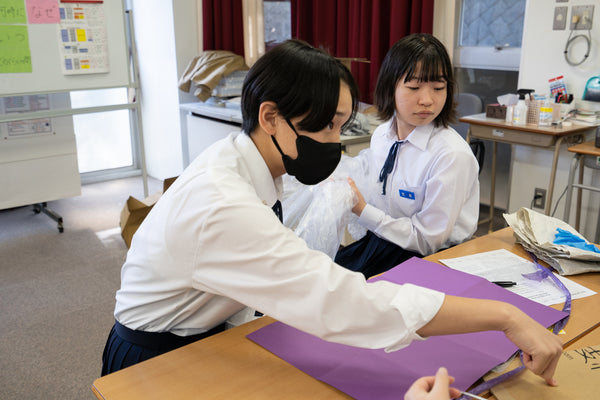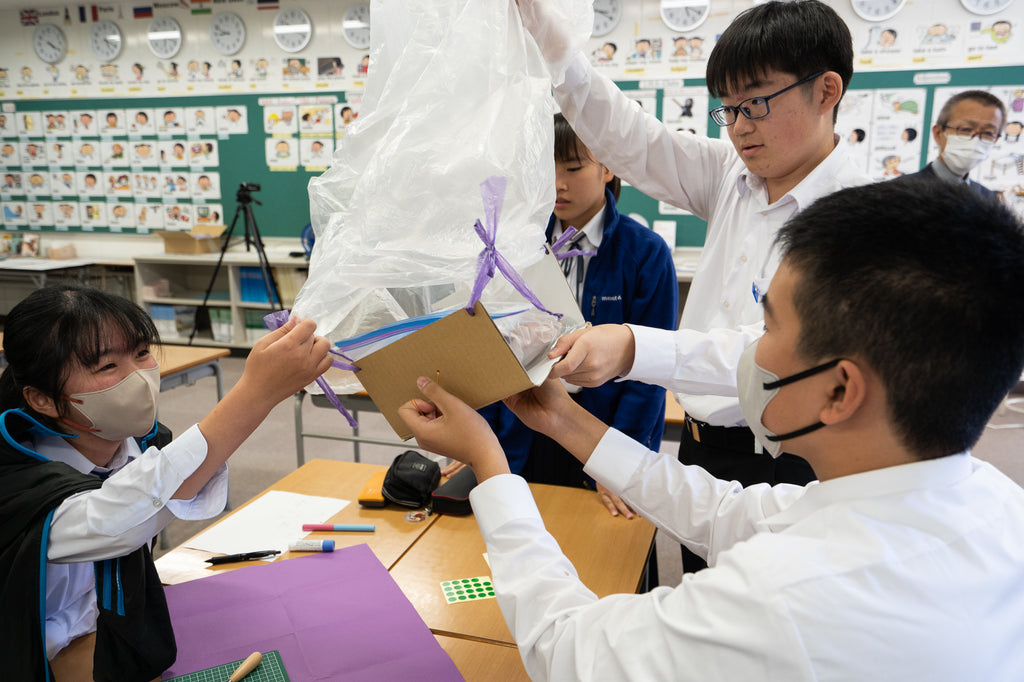Naoshima Teen Lab: Egg Drop!
By Andrew McCormick
This week, I visited Naoshima Junior High School as a guest instructor, debuting our Teen Lab project with its inaugural event, an egg drop. Egg drops are a staple of schools and summer camps across the United States, but they're all but unheard of in Japan. The goal is simple: build a device to protect an egg from an otherwise catastrophic fall. The lesson encourages creativity and resourcefulness, draws on students’ understanding of physics and the various properties of materials, and also builds teamwork skills.

Over the course of a day, I worked with the entire school (7th, 8th, and 9th-graders) in a special version of their regular English classes, with the help of both of the school's English teachers, the assistant English teacher, and the vice principal, who teaches science. I kicked off the activity with a silly introduction to the project. I know all these kids, so I am extra ridiculous with them.
Me: Guess what you're going to do tomorrow.
Them: ?
Me: You're going throw an egg off of the gym balcony.
Literally everyone: WHY?
Me: Because it's fun!
We kept up the irreverent, silly energy throughout the activity. The nice thing about projects like this is that they’re very educational but don’t feel like “school” at all.


The list of rules was short and sweet: Your egg has to fall (no tricks). You have to use the materials provided, though you can trade with other teams and purchase additional materials at the expense of your final “score.” And the biggest challenge for a project that requires team communication: Only use English!


From their limited supplies, the kids devised a wide range of solutions: parachutes, padding, shock absorbers, airbags, and more. The younger kids were given a more generous assortment of materials, while the older kids had to make do with less. No tape, for example.


After 40 minutes of brainstorming and testing, disagreeing and reaching consensus, identifying problems and quickly solving them, they stored their finished devices for the day.




The next day, after lunch, everyone retrieved their contraptions and headed to the school gym. Grade by grade, the teams took turns dropping their eggs from the second-floor balcony. The excitement was palpable!

After each drop, the kids rushed to check if their eggs survived. Shouts of victory and groans of defeat filled the air. The final tally? Out of 16 teams, 13 succeeded in protecting their eggs.


Fine-tuning an activity like this so that the students can learn from both successes and failures is very important. The two worst outcomes for me would have been if everyone failed—or if everyone succeeded. Happily for me, we had a mix of outcomes, and the unsuccessful teams took the results in stride, maybe heartened by the fact that a device made by two of the teachers also failed…



Projects like this are not common in the Japanese school curriculum, which is often criticized for an emphasis on single right answers and benchmarks that are easy to test. I have been fortunate to spend a lot of time at Naoshima Junior High School, where I’ve developed a more nuanced view. The teachers are passionate and innovative, and the kids are curious and engaged.

Still, offering more opportunities for Naoshima children to develop their critical-thinking and creative problem-solving skills is one of the reasons we created Art Island Center, and we are so grateful to the teachers and administrators on the island for welcoming us into the school and helping us develop Teen Lab. In the near future, we will introduce new projects at Art Island Center and at the school where local teens can put their creative minds to work addressing real-world challenges.
Special thanks to Ai Yamashita, Koichi Yamanaka, Ben Nahass, and the Naoshima Junior High School staff and students.
If you are visiting Naoshima with your family or group and you’d like to try a challenge like the egg drop, consider signing up for one of our Idea Workshop sessions!


